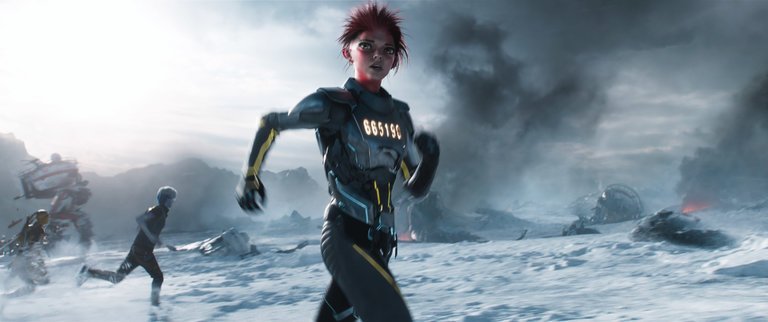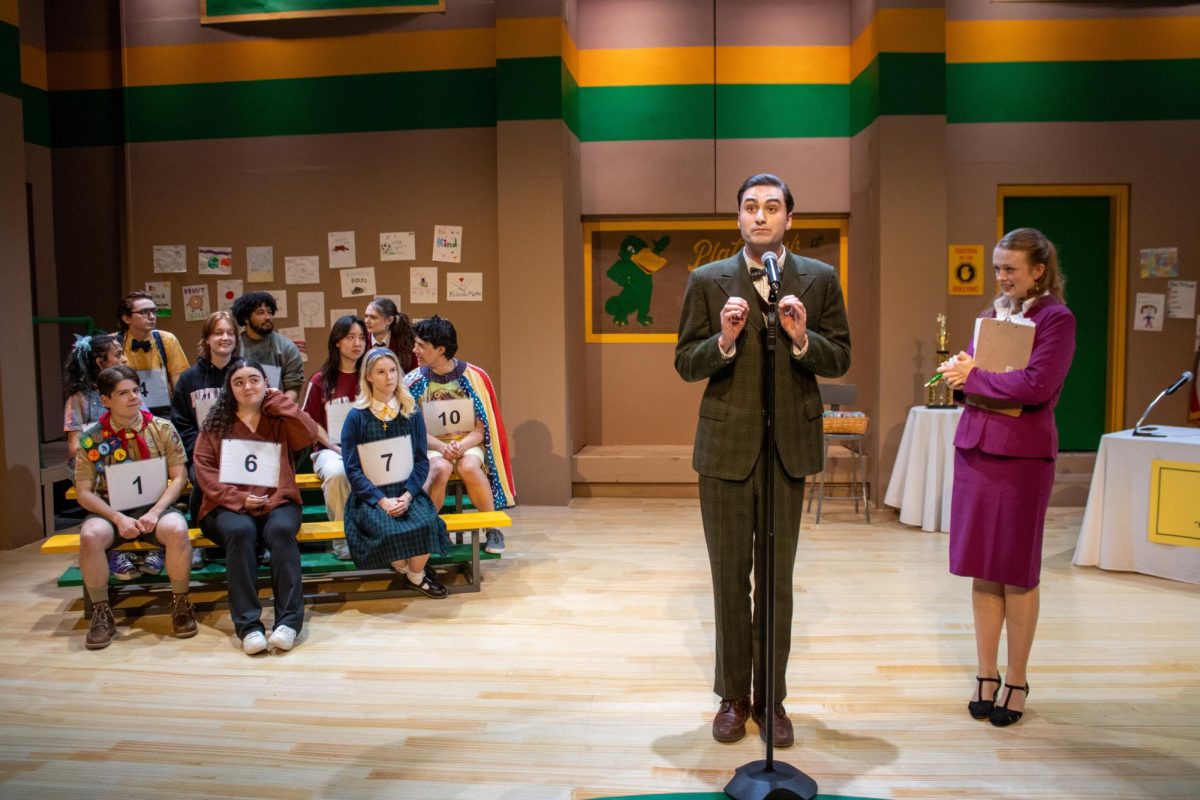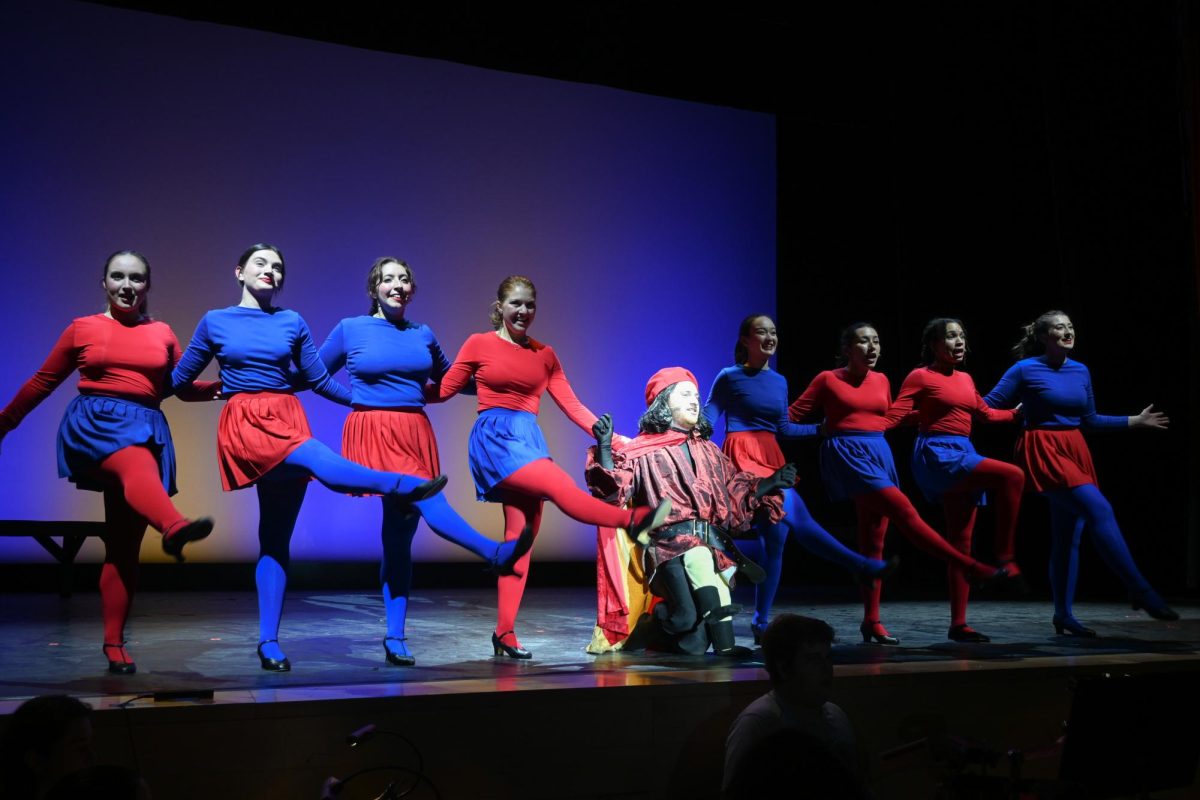By Mohit Puvvala, lifestyle columnist
When “Ready Player One” was announced, many were skeptical — including me. The film seemed like a perfect corporate move to jam in every possible product placement, and after “The Emoji Movie” some frustrated cinephiles have been more cynical about movies’ ulterior motives. However, when I read that Steven Spielberg was directing, I was 100 percent on board.
It’s cliché to say Spielberg is my favorite filmmaker, but he is. I grew up watching his films, and even though many of them came out way before I was born, Spielberg’s films never failed to captivate my imagination. To me, the shark from “Jaws” was real when I first saw its massive teeth tear into a boat; I was afraid to go into the ocean for years. I would roll rocks down hills and run action figures away as fast as I could to replicate the famous scene from “Raiders of the Lost Ark.” When I was very young, I would convince people dinosaurs could be brought back to life because the creatures in “Jurassic Park” looked so real. Spielberg is a director who doesn’t just create movies; he creates worlds, breathing life into every detail.
His most recent film, “Ready Player One,” is set in the year 2045 and follows a kid named Wade Watts, played by Tye Sheridan. Watts’ world is characterized by overpopulation to the point where people live in crammed, makeshift spaces resembling square metal shipping containers stacked on top of each other.
Game designer James Halliday, played by Mark Rylance, creates the Oasis, a virtual reality game that becomes the world’s biggest economic resource. In a grim world, the game allows people to escape harsh realities and become whoever they want to be. Right before Halliday dies, he creates a quest for every player in the game: Find three keys and a hidden Easter egg to inherit half of Halliday’s fortune and complete control over the Oasis.
As his avatar, Parzival, Wade sets out to find the keys along with his in-game friends Art3mis, played by Olivia Cooke, and Aech, played by Lena Waithe. However, the CEO of the world’s second-largest gaming company Nolan Sorrento, played by Ben Mendelsohn, attempts to get the keys for himself so that his company can rule the Oasis.
The film is clearly controlled by a master of grand spectacle. Spielberg shoots every action scene with a frenetic, breathless pace, zooming the audience from place to place. The scenes in the Oasis somehow feel grounded despite its cartoonish atmosphere. Viewers almost feel transported to this place just like Wade, and they learn to get excited every time he puts on his VR headset.
An abundance of iconic movie and game characters mark critics’ divide on this movie, as many reviewers focused on the nostalgia. The movie experience is heightened for those who enjoy nostalgia and who recognize references to other films and video games, such as “King Kong,” “The Iron Giant,” “Jurassic Park,” “Halo,” “Overwatch,” “Batman” and even a small nod to “Star Wars.” Parzival’s vehicle is a Dolorean from “Back to the Future,” and Art3mis’ bike is the famous red bike from “Akira.” Some critics don’t like this meta referential approach to filmmaking, but I don’t think Spielberg intended “Ready Player One” to be one of his Oscar-bait dramas.
Audiences speak with their wallets, and pop-culture and retro-nostalgia are two things that sell well among them. Many of the references are actually to Spielberg’s films, which is a little on-the-nose, but I liked it. My favorite scene revolves around “The Shining” and can be quite frightening if you haven’t seen the Stanley Kubrick masterpiece already.
As far as acting is concerned, everyone gives it their all. Who wouldn’t they when they are working with someone like Spielberg? Sheridan definitely sells the awkward teen vibe in his performance as Wade and Parzival. Mendelsohn clearly has a lot of fun playing the villain like he did in “Rogue One: A Star Wars Story.” Everyone in the supporting cast does a great job at adding their own quirks to their characters. However, Cooke steals the spotlight. Her performance feels multifaceted, and while she’s determined to take down Sorrento, there’s still this vulnerability deep down because of her growing affection for Wade and his tragic past.
However, the film did have a few issues. As I mentioned before, I found myself become increasingly excited every time Wade put on the headset because events back in the real world dragged on. The movie’s purpose is to juxtapose the real world with virtual reality, but the feelings the film inspires go against its message that reality is the better option — I didn’t see much brightness in the real world besides the romantic subplot between Parzival and Art3mis, whose real name is Samantha.
That extremely rushed romantic subplot is another of the movie’s flaws, because although it pays off in the end, the buildup for their relationship is jarring. Parzival and Art3mis meet each other toward the beginning, and Parzival quickly falls in love with her and tells her after only a few days. But when Wade and Samantha actually meet for the first time, they don’t act like lovers, and there is an awkward tension from which romance blossoms.
Characters in the “real world” act nothing like their online counterparts, a relevant parallel to the online personas people create for themselves today. A shy teen in Columbus, Ohio, can start a revolution through his online persona via in-game skill and alliances with people all over the world.
On a high note, the score is amazing. Alan Silvestri’s score takes bits from other classic themes, but infuses his own score’s riffs. The song list is very ‘80s retro, and I loved it.
Regardless of its flaws, “Ready Player One” is Spielberg’s return to big screen spectacle, delivering on high expectations and sprinkling its own sense of movie magic throughout. While it is not without flaws, it is jam-packed with exciting action, heartfelt moments and the most pop culture references I have seen in a film. It is about as nerdy as it gets, but Spielberg proves that nerdy can make for a really fun film.















